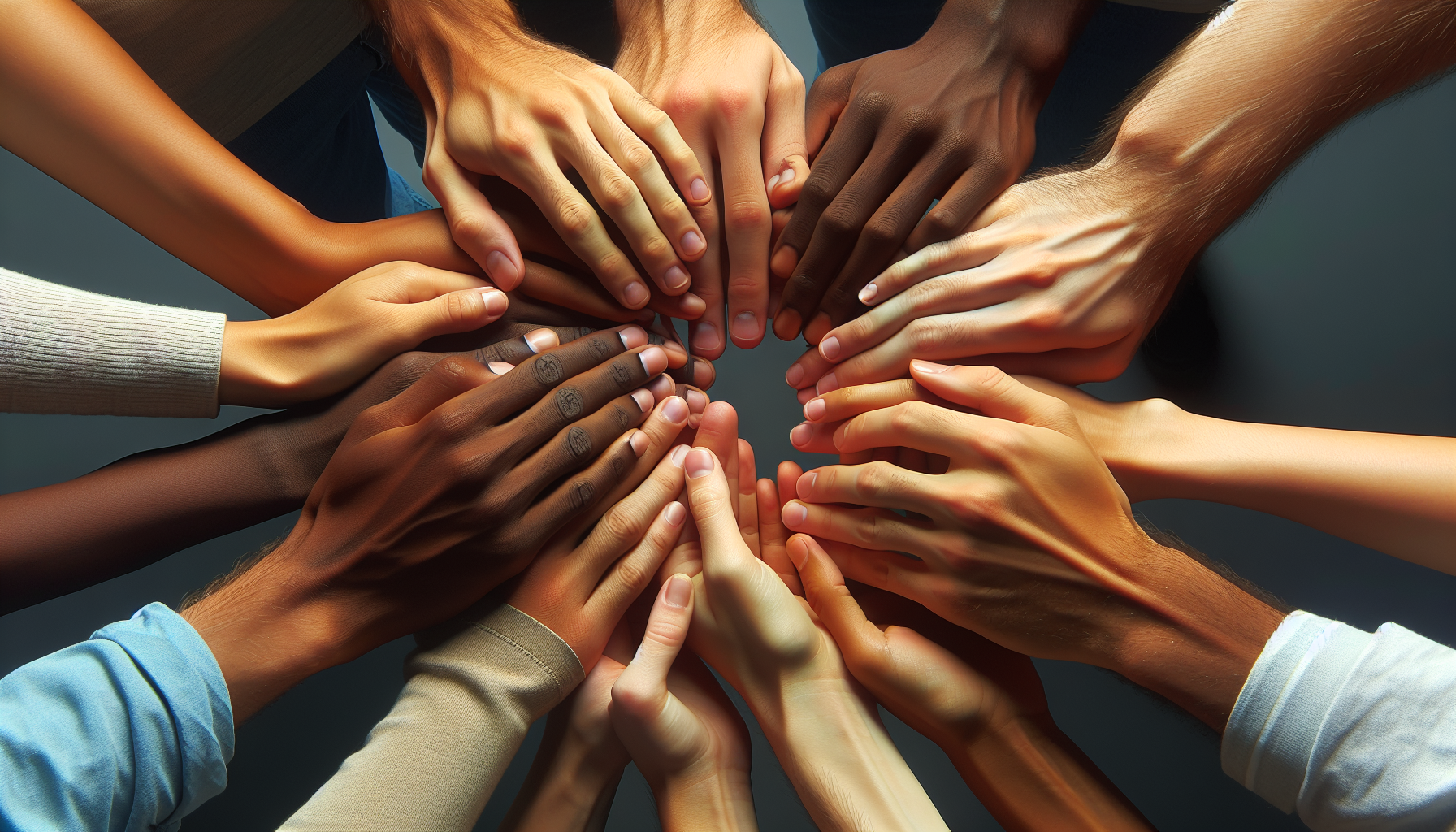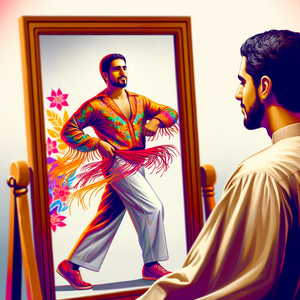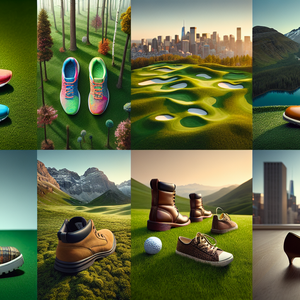Breaking the Mold in Fashion: The Rise of Plus-Size Male Models

Historically, the fashion world has been dominated by a specific image of the male model—tall, lean, and fit. However, a growing movement advocating for body positivity and inclusivity is changing that narrative. Plus-size male models are not just a passing trend; they represent a pivotal moment in the industry where diverse body types are being celebrated and recognized. One of the trailblazers in this movement is Zach Miko, the first plus-size male model to be signed by a major modeling agency, IMG Models. Miko's presence in campaigns and runway shows has not only challenged the status quo but also provided representation for a demographic that has long been marginalized in fashion. His work has garnered attention from both the media and consumers, showcasing that beauty comes in all shapes and sizes. This new era of representation encourages a broader acceptance of body diversity in fashion, fostering an environment where individuals of all sizes can feel valued and seen.
Brands Leading the Charge
Several fashion brands have taken significant steps to embrace inclusivity by featuring plus-size male models in their advertising campaigns. Companies like ASOS, Levi's, and H&M have recognized the importance of representing all body types in their marketing strategies. These companies are not only catering to a broader audience but are also setting a standard for others in the industry. For instance, ASOS launched a dedicated plus-size menswear line, showcasing a range of styles that cater to various body types. By employing plus-size male models in their campaigns, ASOS sends a clear message: fashion is for everyone, regardless of size. This commitment to inclusivity has resonated with consumers, leading to increased brand loyalty and sales. Moreover, Levi's has introduced extended sizes in their product lines, utilizing plus-size male models to highlight the fit and style of their clothing. This not only broadens their customer base but reinforces the idea that all individuals deserve fashionable options that fit well. By embracing plus-size representation, these brands are not just selling clothes; they are championing a movement towards body positivity and inclusivity.
The Impact on Consumer Perceptions
The representation of plus-size male models in fashion has far-reaching implications, particularly in how society perceives masculinity and body image. The traditional portrayal of men in media often emphasizes unrealistic ideals, contributing to body dissatisfaction and mental health issues. By showcasing diverse body types, plus-size male models are challenging these stereotypes and encouraging men to embrace their bodies as they are. Research has shown that representation matters. A study published in the journal Body Image found that exposure to diverse body types can improve body satisfaction among individuals. When consumers see models who look like them, they are more likely to feel validated and accepted. This shift in representation can help combat harmful societal norms and promote a healthier self-image among men. Additionally, social media platforms have played a crucial role in amplifying the voices of plus-size male models. Influencers like Chubstr and Nico Tortorella are using their platforms to advocate for body positivity and inclusivity, engaging with fans and challenging traditional beauty standards. Their reach and influence underscore the growing demand for representation and the impact it can have on societal perceptions of masculinity.
The rise of plus-size male models in the fashion industry is not just a trend; it is a revolution that is reshaping the way we think about beauty and masculinity. By breaking the mold and challenging traditional standards, these models are paving the way for a more inclusive and diverse future in fashion. As brands continue to embrace this change, the impact on consumer perceptions and societal norms will be profound, ultimately fostering a culture that values all bodies. The journey is far from over, but the strides made by plus-size male models are a testament to the power of representation and the changing landscape of the fashion industry. As the demand for inclusivity grows, so too does the recognition that all individuals, regardless of their size, deserve to see themselves reflected in the world around them. This movement is not just about fashion; it is about making everyone feel empowered and accepted in their own skin.
Plus-Size Male Model
IMG Models, ASOS, H&M, Levi's
Core Responsibilities
Collaborate with fashion brands and photographers to showcase clothing and accessories tailored for plus-size men.
Participate in runway shows, photo shoots, and promotional events to promote body positivity and inclusivity in fashion.
Engage with social media platforms to build personal brand and connect with audiences regarding body image and representation.
Required Skills
Strong presence and confidence in front of the camera and on the runway.
Ability to communicate effectively and authentically with audiences regarding body positivity.
Experience with modeling agencies and familiarity with the fashion industry.
Fashion Brand Marketing Specialist
ASOS, Levi's, Nike, Uniqlo
Core Responsibilities
Develop and implement marketing strategies that emphasize inclusivity and diverse body representation.
Analyze consumer trends and feedback to create targeted campaigns featuring plus-size male models.
Collaborate with design and production teams to ensure marketing materials align with product offerings.
Required Skills
Strong understanding of digital marketing and social media strategies.
Experience in market analysis and consumer behavior research.
Excellent communication and project management skills.
Body Positivity Advocate
Nonprofits, fashion brands, mental health organizations
Core Responsibilities
Create content and campaigns that promote body positivity across various platforms, including social media, blogs, and public speaking engagements.
Collaborate with brands to enhance their inclusivity initiatives and representation efforts.
Conduct workshops and seminars to educate others on self-acceptance and body diversity.
Required Skills
Strong writing and storytelling abilities to effectively convey messages of body positivity.
Experience in community outreach and public speaking.
Knowledge of current trends in body image and inclusivity movements.
Fashion Stylist Specializing in Plus-Size Clothing
Fashion boutiques, styling agencies, personal shopping services
Core Responsibilities
Curate and assemble outfits for photoshoots, fashion shows, and personal clients, focusing on plus-size men’s fashion.
Collaborate with designers and brands to select styles that reflect current trends while promoting inclusivity.
Provide personalized styling consultations to clients seeking fashionable outfits in larger sizes.
Required Skills
Strong eye for fashion and understanding of how to dress diverse body types.
Excellent communication and interpersonal skills to connect with clients effectively.
Knowledge of the latest trends in plus-size fashion and styling techniques.
Diversity and Inclusion Coordinator in Fashion
Major fashion corporations, nonprofit organizations, diversity consulting firms
Core Responsibilities
Develop and implement diversity initiatives within fashion brands, focusing on inclusivity in marketing and hiring practices.
Monitor and evaluate industry trends related to body diversity and advocate for policy changes within the organization.
Organize training sessions and workshops to educate employees about inclusivity and representation in fashion.
Required Skills
Strong background in human resources, diversity training, or social advocacy.
Excellent organizational and project management skills.
Proven ability to engage stakeholders and drive change within an organization.


